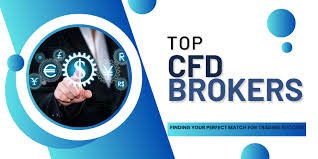
The Best Strategy for CFD Trading
CFD trading, or Contract for Difference trading, has become increasingly popular among investors seeking to capitalize on market movements without actually owning the underlying asset. The flexibility, leverage, and diverse range of markets available to trade make CFDs an attractive option for both new and experienced traders. However, to succeed in this dynamic environment, it’s crucial to employ a robust trading strategy. In this article, we will discuss the best strategy for CFD trading, emphasizing effective risk management, technical analysis, and the importance of trading psychology. Additionally, you can find useful resources like best strategy for cfd trading bestbrokercfd.com to assist you in your trading journey.
Understanding CFD Trading
Before diving into strategies, it’s essential to understand what CFD trading entails. A CFD is a financial derivative that allows traders to speculate on asset price movements without purchasing the asset itself. This means you can trade on various markets, including stocks, commodities, indices, and forex. The main advantage of using CFDs is the ability to leverage your investment, meaning you can control a larger position with a smaller amount of capital. However, this also increases the potential risk, making effective strategies even more critical.
1. Setting Clear Objectives
The first step in developing a successful CFD trading strategy is to set clear and achievable trading objectives. Define your risk tolerance, potential return, and the timeframes you’re willing to commit to trading. Goals could include percentages for monthly gains, a specific number of successful trades per week, or a combination of factors. Having a clearly defined objective will help guide your trading decisions and maintain focus.
2. Implementing Risk Management Techniques
Risk management is perhaps the most crucial aspect of successful trading. Without it, even the best trading strategies can lead to significant losses. Here are some effective risk management techniques:
- Use Stop-Loss Orders: Placing stop-loss orders can help you limit potential losses. This is a predetermined price level at which your position will automatically close if the market moves against you.
- Risk-Reward Ratio: Aim for a favorable risk-reward ratio for every trade. A common rule is to risk 1 unit to potentially gain 2 or 3 units.
- Diversification: Avoid putting all your capital into a single trade. Instead, spread your investments across different assets to reduce risk.
3. Mastering Technical Analysis
Technical analysis is an essential component of any CFD trading strategy. This involves analyzing historical price charts and using various indicators to predict future price movements. Here are some key elements to consider:
- Chart Patterns: Understand basic chart patterns such as head and shoulders, triangles, and flags. These patterns can indicate potential market reversals or continuations.
- Technical Indicators: Utilize indicators like moving averages, RSI (Relative Strength Index), and MACD (Moving Average Convergence Divergence) to help inform your trading decisions.
- Support and Resistance Levels: Identifying key support and resistance levels can help you determine entry and exit points with better precision.
4. Developing a Trading Plan

A well-structured trading plan is critical for navigating the complexities of CFD trading. Your plan should include:
- Your trading strategy, including entry and exit rules.
- Your risk management approach, including position sizing and the use of stop-loss orders.
- Criteria for trade selection, including technical and fundamental analysis factors.
Stick to your plan consistently, but remain flexible to adapt your strategy based on market conditions.
5. Importance of Trading Psychology
The psychological aspect of trading is often underestimated, yet it plays a significant role in a trader’s success or failure. It’s essential to manage your emotions and maintain discipline. Here are some tips to enhance your trading psychology:
- Avoid FOMO: Fear of missing out can drive irrational decisions. Stick to your trading plan and avoid making impulsive trades.
- Stay Patient: Successful trading requires patience. Wait for the right opportunities and avoid overtrading.
- Learn from Mistakes: Every trader experiences losses. Analyze your mistakes and learn from them rather than letting them affect your confidence.
6. Backtesting Your Strategy
Before committing real capital, it’s wise to backtest your trading strategy. This involves applying your strategy to historical data to see how it would have performed. Backtesting allows you to refine your approach and make necessary adjustments without risking your funds.
7. Continuous Learning and Adaptation
The markets are constantly evolving, and so should your trading strategies. Stay educated about market trends, new trading tools, and techniques. Engage in forums, read books, and take courses to enhance your trading skills. Regularly review and adapt your trading plan to ensure it remains effective in changing market conditions.
Conclusion
In conclusion, finding the best strategy for CFD trading involves a combination of clear objectives, effective risk management, technical analysis, and a deep understanding of trading psychology. By following these guidelines and continuously refining your approach, you can enhance your chances of success in the competitive world of CFD trading. Remember, the journey to becoming a proficient trader takes time, effort, and dedication—but the rewards can be well worth it.
Happy trading!
